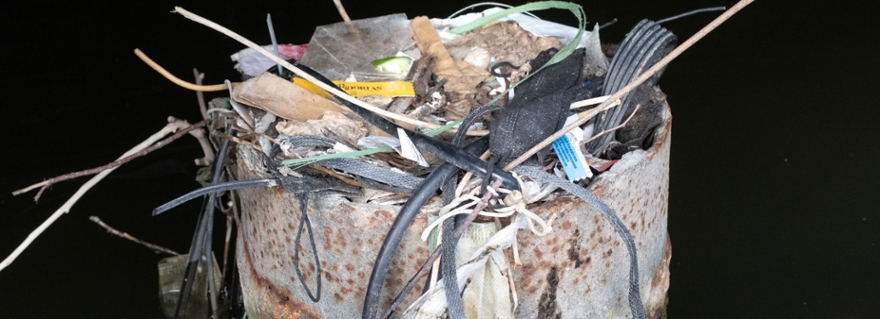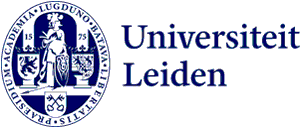
From Steno to Snickers: the Anthropocene through the eyes of a coot
What looked like an ordinary coot’s nest turned out to be a five-star location with a remarkable backstory. Beneath a jetty on the Rokin in Amsterdam, biologist Auke-Florian Hiemstra discovered a true time capsule — complete with face masks from the COVID era and a Mars wrapper dating back to the 1994 World Cup.
Hiemstra has been studying how coots incorporate urban waste into their nests, and what the consequences of that behaviour are. While collecting nests with a student, he came across one that seemed quite normal at first. But the deeper he dug, the older the plastic became. ‘Eventually, at the very bottom, we found a Mars wrapper advertising the 1994 football World Cup,’ says Hiemstra, who is an external PhD candidate at Leiden University working at Naturalis. This one coot’s nest contains over thirty years of plastic history.
By checking the expiration dates on the packaging, Hiemstra was able to reconstruct what had happened at the site over time. The nest turned out to be a kind of timeline — a stacked archive of nesting layers.
Steno, the founder of stratigraphy
The idea that newer layers build up on top of older ones might seem obvious now, but in the seventeenth century it was revolutionary. Niels Stensen, better known as Steno, was a scholar in Leiden who laid the foundation for stratigraphy, a field in geology. Hiemstra recognises the same principle in coot nests. ‘What once applied to rocks now also applies to layers of plastic.’
Like Steno, Hiemstra also studied in Leiden. ‘It’s incredible to think my research builds on principles developed here centuries ago,’ he says. ‘And applied in a way Steno could never have imagined; plastic hadn't even been invented yet.’
An ecological magnet made of plastic
Over a thirty-year span, at least ten coot pairs reused this same nest. ‘We call that an ecological magnet — a place animals keep returning to,’ says Hiemstra. That’s unusual: coots typically build a new nest each year using natural materials that eventually decompose. Plastic doesn’t, which creates a sturdy foundation that’s reused again and again. ‘Add a bit of fresh material on top and voilà: a fresh bed.’
Reusing nests could mean coots spend less time building and more time foraging or defending territory. But reusing layers from the COVID era — full of entangling face masks — could also be dangerous.

For a coot, valuable material
Some materials appeared repeatedly over the years — most notably, McDonald’s packaging. ‘I felt more like a McDonald’s archaeologist than a biologist at times,’ Hiemstra jokes. The packaging wasn’t just trash; it became construction material. A revaluation of what we discard. And the location couldn’t have been more symbolic: the archaeological coot nest was found just in front of Amsterdam’s archaeological museum.
Plastic’s permanence is also clear from the numbers: today, there is twice as much plastic on Earth as the total mass of all animals combined. So perhaps it’s no surprise that a coot would build a nest out of it. ‘We all know the story of plastic pollution by now,’ says Hiemstra. ‘But through the eyes of a coot, that story becomes tangible — and confronting. What we see as waste, a coot sees as valuable material. We’ve kind of forgotten that.’
On display in The Hague
The nest can soon be viewed at the Anthropocene exhibition at Museon-Omniversum in The Hague. Hiemstra: ‘I hope this nest gets a lot of young kids thinking about what we want future nest layers to look like.’
Scientific publication
Hiemstra’s research was published in Ecology. The New York Times, Guardian, BBC, National Geographic, and both Nature and Science covered it. He also posted about the study on Bluesky.
To continue exploring the impact of humans on the natural world, Hiemstra is now seeking funding for a postdoctoral position.
